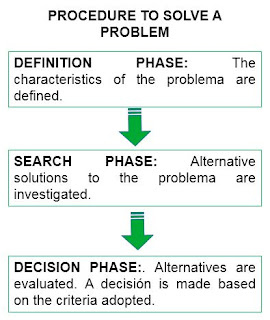An introduction to the process of designing work methods – The general procedure for solving problems
In the general procedure for solving problems, three different phases can be distinguished: i) a definition phase, ii) a search phase and iii) a definition phase.
Definition phase
It consists of determining the characteristics of the problem, that is:
- The specifications of the initial and final state.
- Existing restrictions.
- The criterion (preference).
- The number of repetitions.
- The time limit.
- This includes a description of the data or constraints within which the methods analyst must operate.
Search phase
The search process implies an inquiry regarding the alternative solutions of the problem, that is, the different methods to achieve the transformation of the initial state towards the end.
This process is characterized by an investigation as exhaustive as possible, to later carry out a synthesis. In this phase, the ingenuity and inventiveness of the methods analyst plays an important role.
Decision phase
The decision process consists of evaluating the alternatives obtained, and then choosing based on the established criteria.
In practice, the aforementioned phases of the problem-solving process may have points in common, and it is often necessary to repeat the cycle, with the corresponding feedback, before finding a satisfactory solution.





1 comentarios:
Great content ! Understanding the process of designing work methods is essential for improving efficiency! It's fascinating to see how systematic problem-solving can lead to better workplace practices.
ISO Lead Auditor Course in Chennai
Post a Comment